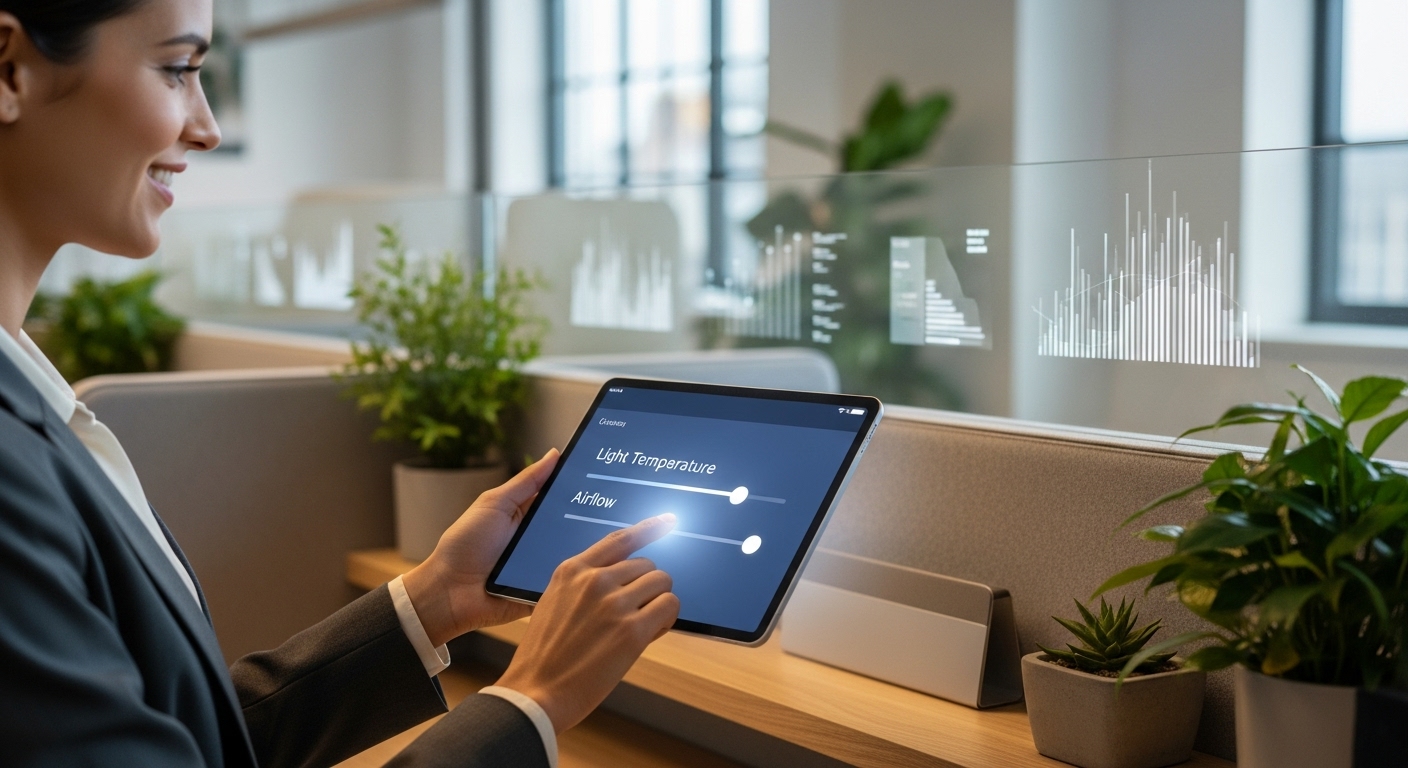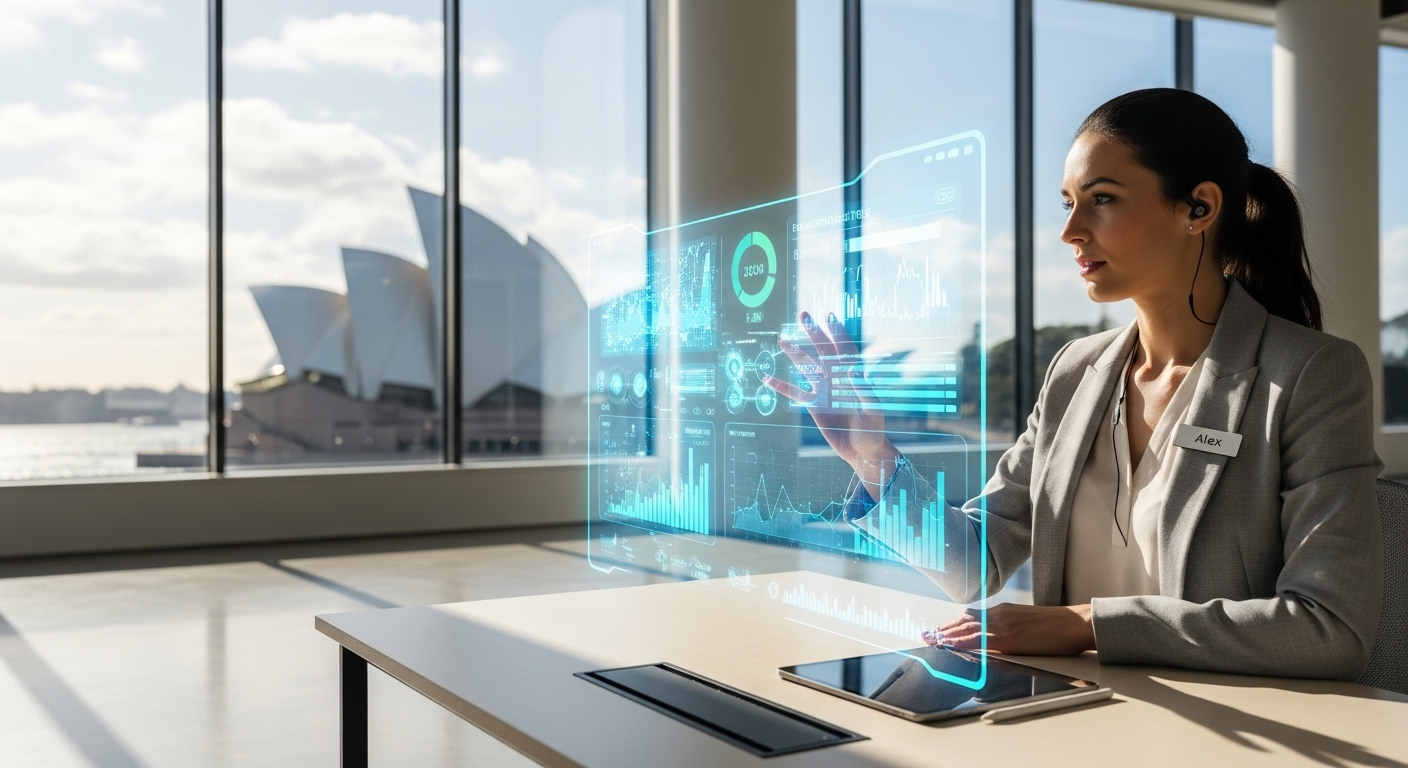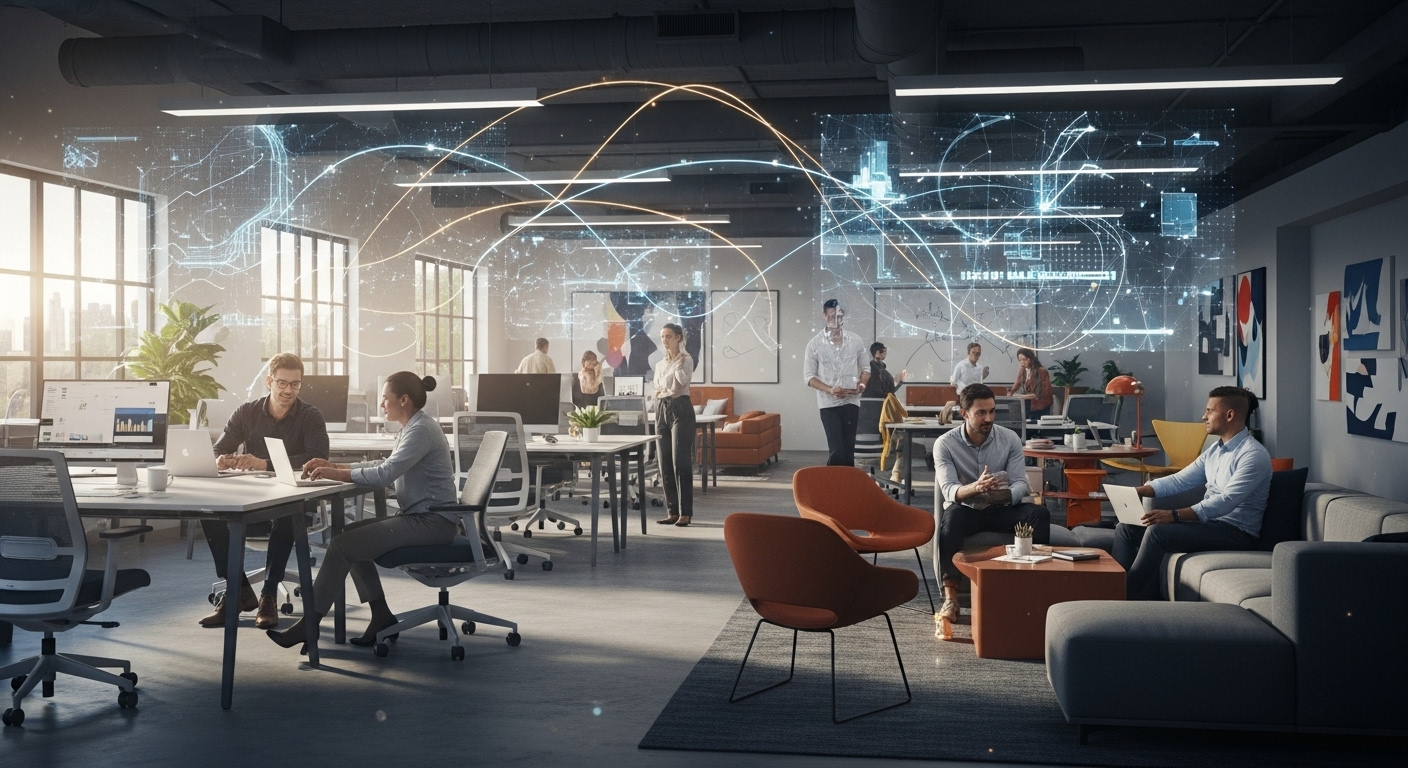The era of the one-size-fits-all office is officially over. For decades, workspaces were designed for uniformity, forcing individuals to adapt to a standardized environment of fixed lighting, a single thermostat setting, and homogenous layouts. Today, a profound shift is underway, driven by advancements in smart technology and a renewed focus on employee well-being. The future of work isn’t just about flexible hours or remote options; it’s about creating physical environments that are as dynamic and responsive as the people who inhabit them. We are moving beyond the concept of a merely ‘connected’ office to a ‘personalized’ one, where the workspace intelligently adapts to individual needs and preferences in real-time. This evolution is critical in a competitive talent market where the quality of the employee experience is a key differentiator. This article explores how smart office technology is making the personalized workspace a reality. We will delve into intelligent space management that goes beyond simple hot-desking, personalized climate and lighting controls that boost cognitive function, the role of data in promoting a healthier workplace, and how these innovations ultimately translate into measurable gains in performance, satisfaction, and business outcomes.
Beyond Hot-Desking: The Rise of Intelligent Space Management
The concept of unassigned seating, or hot-desking, was an early attempt at workspace flexibility, but it often felt chaotic and impersonal. Smart office technology elevates this idea into a sophisticated system of intelligent space management. This is not simply about finding an empty desk; it’s about finding the right type of environment for the specific task at hand, at the exact moment it’s needed. The engine behind this revolution is the Internet of Things (IoT). Discreet sensors embedded under desks, in meeting rooms, and throughout common areas gather anonymous, real-time occupancy data. This information feeds into a central platform, often accessible to employees via a mobile app. An employee preparing for a deep-focus task can instantly locate and reserve a desk in a designated quiet zone, while another who needs to collaborate with a team can find an available pod with a digital whiteboard. This system removes the friction and uncertainty of traditional flexible seating arrangements. Furthermore, these platforms can integrate with employee calendars, proactively suggesting and booking appropriate spaces for upcoming meetings or scheduled focus time. For facilities managers, the benefits are transformative. Instead of relying on anecdotal evidence or outdated headcount figures, they have access to a rich dashboard of workspace analytics. They can see which areas are most popular, which desk types are underutilized, and how traffic flows throughout the day. This data empowers them to make informed decisions about real estate strategy, reconfiguring layouts to better match employee work patterns, decommissioning unused space to reduce costs, and planning future office designs based on proven demand rather than speculation. It turns the physical office from a static cost center into a dynamic, data-driven asset optimized for its users.
The Climate of Comfort: Personalized Environmental Controls
The perennial office ‘thermostat war’ is a familiar source of workplace strife, a clear indicator that a single environmental setting cannot possibly suit everyone. Smart technology offers a truce by enabling personalized environmental controls. This moves beyond a central thermostat to a network of sensors and smart vents that create micro-climates within the office. Employees can use a simple app to indicate their preference—warmer or cooler—and the system adjusts the airflow in their immediate vicinity without affecting colleagues nearby. This level of granular control was once unimaginable but is now a key feature in modern smart buildings. The impact of this personalization extends beyond mere comfort. Studies have consistently shown a direct link between ambient temperature and cognitive performance. By allowing individuals to tailor their thermal environment, companies are not just improving satisfaction; they are creating the conditions for optimal productivity. Lighting is another critical environmental factor receiving a smart upgrade. Human-centric lighting systems are designed to support our natural circadian rhythms. These systems automatically adjust the color temperature and intensity of light throughout the day, mimicking the pattern of natural sunlight. They provide cool, blue-toned light in the morning to boost alertness and energy, then gradually shift to warmer, amber tones in the afternoon to reduce eye strain and help employees wind down. Some systems even allow for individual desk-side control, letting an employee who is sensitive to light dim their overhead fixture. The result is a work environment that actively supports employee well-being, reducing fatigue and enhancing focus in a way that static, uniform lighting never could.
Seamless and Secure Access: The New Digital Handshake
The employee’s experience with a smart office begins before they even sit down at their desk. The traditional key card is being replaced by a far more seamless and integrated access control system. Using mobile credentials stored on a smartphone or even biometric identifiers like facial recognition, employees can move effortlessly through the building. This ‘digital handshake’ extends far beyond just opening doors. A single secure authentication can trigger a cascade of personalized actions. As an employee enters the building, the system can automatically check them in, assign them their pre-booked desk, and adjust that desk’s lighting and temperature settings to their saved preferences. This same credential can grant access to printers, personal lockers, and other resources, creating a truly frictionless journey throughout the day. While the convenience is undeniable, the integration of such powerful technology rightfully raises questions about security and privacy. A robust smart office security framework is non-negotiable. This involves end-to-end encryption for all data transmitted from sensors and devices, strict access protocols to ensure data is only used for its intended purpose, and transparent privacy policies that clearly communicate to employees what data is being collected and how it is being used. Anonymizing occupancy data is a critical step, ensuring that analytics focus on how spaces are used, not on tracking individuals. By building these systems on a foundation of security-first principles, companies can offer the profound benefits of seamless access while maintaining the trust and confidence of their workforce.
Data-Driven Well-being: Monitoring the Health of the Workspace
In the wake of a global pandemic, employees are more attuned than ever to the health and safety of their physical surroundings. Smart office technology provides a powerful and transparent way for companies to demonstrate their commitment to employee well-being. This goes beyond comfort and convenience into the realm of environmental health monitoring. Advanced air quality sensors are becoming a standard feature in smart buildings, continuously measuring key indicators like carbon dioxide (CO2), volatile organic compounds (VOCs), and humidity levels. When CO2 levels rise in a crowded meeting room, indicating poor ventilation, the smart building management system can automatically increase the flow of fresh air. This data can also be displayed on dashboards or in the employee app, providing real-time assurance that the air they are breathing is clean and healthy. This proactive approach to air quality has a direct impact on health and cognitive function, as high CO2 levels are known to cause drowsiness and impair decision-making. The monitoring doesn’t stop with air quality. Sensors can also be deployed to monitor noise levels, helping to enforce the boundaries of designated quiet zones and identify acoustic issues in collaborative areas. Even water quality can be monitored to ensure it meets health standards. By leveraging data to manage the health of the physical environment, organizations are making a tangible investment in their people. This is a powerful tool for attracting and retaining top talent, as it shows that the company’s definition of well-being extends to the very air its employees breathe.
Frictionless Collaboration: Tech-Enabled Teamwork
In a hybrid work model, the office’s primary role is shifting from a place for individual work to a hub for collaboration. Smart technology is essential for bridging the gap between in-person and remote team members, ensuring that collaboration is seamless for everyone, regardless of their location. Smart meeting rooms are the epicenter of this shift. Gone are the days of fumbling with cables and struggling to launch a video call. Today’s integrated systems allow a meeting to be started with a single tap on a room’s control panel or even automatically upon the host’s arrival. Intelligent cameras use AI to dynamically pan, tilt, and zoom, perfectly framing the active speakers or capturing the entire room, making remote participants feel more present and engaged. Digital whiteboards allow for real-time brainstorming where ideas can be captured, saved, and instantly shared with all attendees, whether they are in the room or on the other side of the world. Beyond the meeting room, smart tech helps remove other points of friction. Integrated wayfinding features in the office app can help employees quickly locate colleagues or find an available meeting space, saving valuable time and reducing frustration. By automating the logistical aspects of collaboration, this technology allows teams to focus their energy on what truly matters: creative problem-solving and innovation. The goal is to make the experience of working together so smooth that the technology enabling it becomes virtually invisible.
The ROI of Personalization: Connecting Smart Tech to Business Outcomes
Investing in a personalized, smart workspace is not merely an employee perk; it is a strategic business decision with a clear return on investment (ROI). The benefits manifest across several key areas of the organization. Firstly, there is a direct impact on talent acquisition and retention. A state-of-the-art, human-centric office is a powerful differentiator in a competitive job market. When employees feel that their company is actively investing in their comfort, health, and productivity, their satisfaction and loyalty increase, leading to lower turnover and reduced recruitment costs. Secondly, the link between an optimized environment and employee performance is well-documented. As one industry report notes:
According to the Leesman Index, which has surveyed over 700,000 employees worldwide, 85% of workers state that the design of their workplace is important, yet only 57% are satisfied with it. The highest-performing workplaces consistently show a strong correlation between satisfaction with the environment and a sense of productivity.
By providing personalized controls over light, temperature, and acoustics, companies are directly enabling the conditions for peak cognitive performance. Thirdly, workspace analytics deliver significant operational efficiencies. Real-time data on space utilization allows companies to optimize their real estate portfolio, potentially reducing lease costs by eliminating underused space or reconfiguring layouts for higher density where appropriate. Finally, smart energy management, a byproduct of intelligent HVAC and lighting systems, leads to substantial reductions in utility consumption and a smaller carbon footprint, aligning operational goals with corporate sustainability initiatives. When combined, these factors demonstrate that personalizing the workspace is not an expense but a high-yield investment in both people and profitability.
Conclusion
The evolution of the office from a static container for work into a personalized, responsive ecosystem represents one of the most significant transformations in the future of work. We have moved beyond isolated gadgets and are now building integrated, intelligent environments that place the individual at their center. By leveraging IoT sensors, AI-driven platforms, and seamless connectivity, smart technology allows the workplace to adapt in real-time to the diverse needs of its occupants. This personalization touches every aspect of the employee experience, from finding the ideal workspace for a specific task to controlling the climate and lighting for optimal comfort and focus. It ensures that collaborative efforts are frictionless, bridging the gap between physical and digital teams. More than just a collection of impressive features, this data-driven approach to the workplace creates a healthier, more engaging, and profoundly more effective environment. The business case is clear and compelling, with measurable returns in talent retention, productivity, operational efficiency, and sustainability. As companies navigate the complexities of the modern workforce, those that embrace technology to create a truly human-centric, personalized workspace will not only attract the best talent but will also unlock their full potential.





